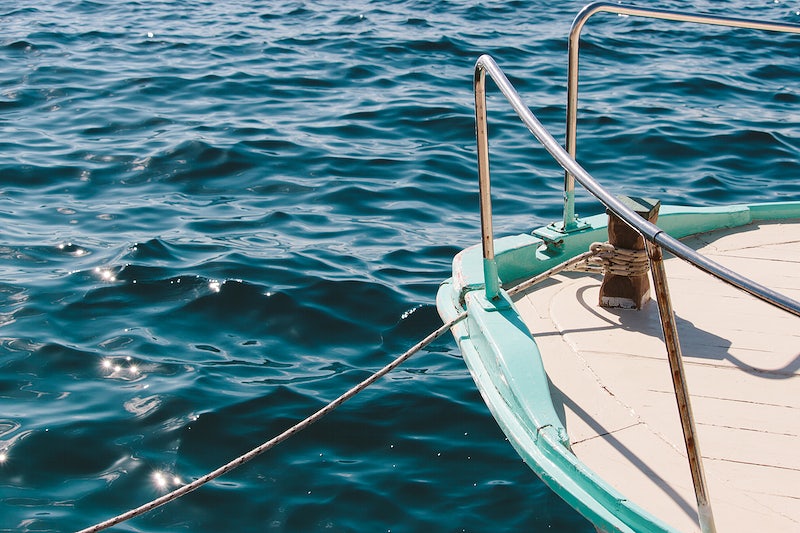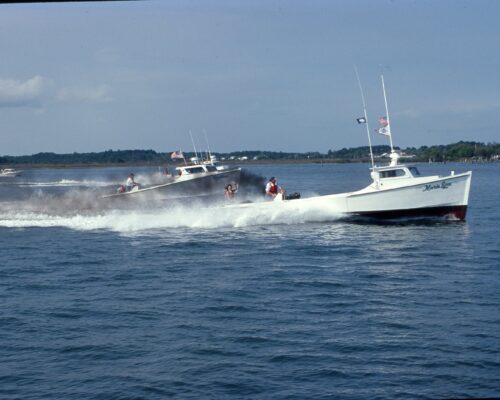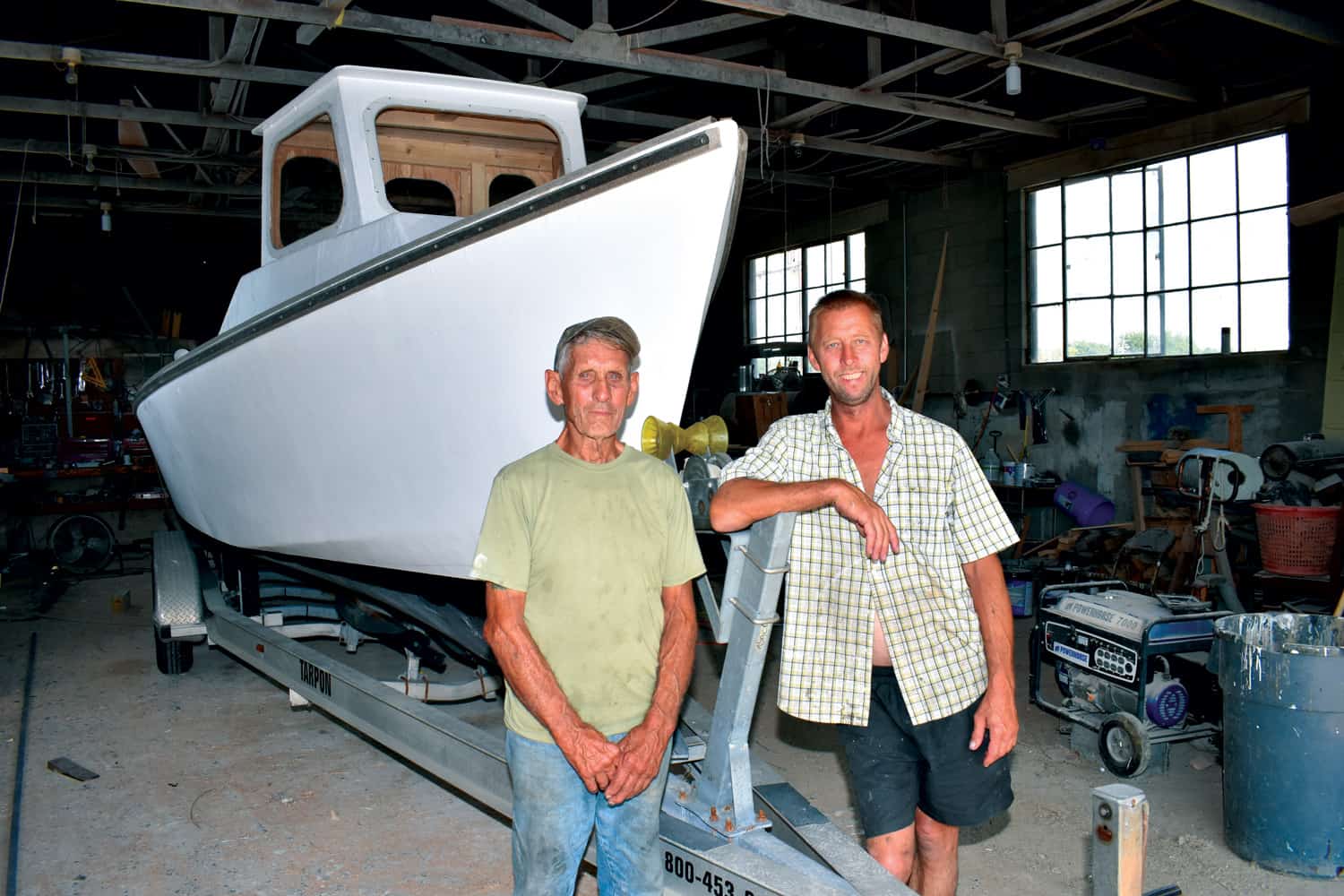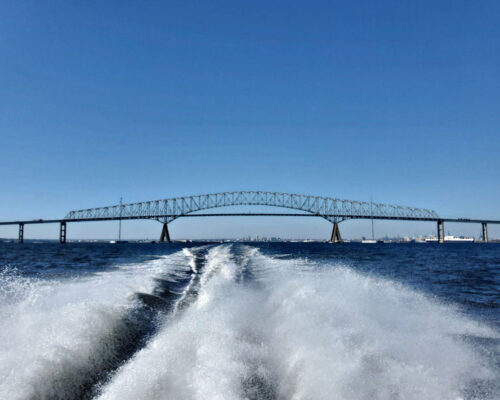Whether stopping for a quick break, grabbing a bite to eat, enjoying the display of a fireworks show or calling it a night after a long day of cruising, it’s important to practice safe anchoring. Captain Matt Benhoff from the Annapolis School of Seamanship (CBM’s sister company) has tips that will limit the risks of your boat dragging onto shore or even into someone else’s anchor line.
The first tip for anchoring your boat safely is choosing a favorable location that is sheltered from wind, like tucking into pockets along the shore. Looking at the fetch, or the distance wind travels over water, will help to see where there are rougher conditions. Some navigation systems will have symbols alerting boaters of ideal places to anchor.
Assessing the bottom is the next step in choosing a location to safely anchor. Generally, sand and mud lead to stronger holds, with mud being ideal. Fine sand could lead the anchor to slide out and rocky bottoms can be slippery, or the anchor could get caught. Again, navigation systems will display different symbols for different bottom characteristics.
Once you’ve chosen a good location, you should turn your eye to your ground tackle. While there are various types of anchors that could be used with line, chain or a combination of both, it’s crucial to ensure that your anchor is the proper size for your vessel. Chain can be more expensive than rope, but using all chain is best for a good hold. If you can’t spare the extra money, even having some chain at the end of the anchor line helps.
Then you should determine the amount of scope you’ll let out based on the depth of the water. “Scope” refers to the length of anchor line let out compared to the depth of the water you’re anchoring in. Make that calculation based on the vertical distance from the bottom to the bow where the anchor rode comes aboard, including not just the depth of the water, but also adding the freeboard, or the distance between the surface of the water and the bow at deck level. Usually, the bare minimum is a ratio of 5 feet of anchor line to 1 foot of water, but in many cases, it’s better to create dip in the line by letting out even more line. For smaller boats using all-nylon line in calm conditions, a 7-1 ratio is recommended.
Once you have evaluated all these factors, it’s time to pull your bow into the wind at the location where you’ll drop the anchor. Visualize your swing radius since your boat can turn 360 degrees around the anchor and drop the anchor at the center. Start backing away to prevent line from snarling on itself and when you’ve let out about half your line, pause to back up for a few seconds to “snub” it. This digs the anchor into the bottom and straightens the line.
You’ll “snub” again once you’ve paid out your intended length of line, this time reversing for a few more seconds. The key tip at this point is to make sure the line is taut as the boat snaps into place with the anchor and that the line isn’t bouncing, which would mean that the anchor is dragging. As the line dips back down, you should then follow apps for anchoring or watch your snail trail on your chart plotter to make sure your vessel isn’t moving back as it swings side to side.
Another tip is that if your boat starts to drag, the first course of action should be to pay out more line. However, sometimes this could lead to your boat to swing too wide if you’ve paid out too much. In this case, you should back up and start the process over.
Some of the most common mistakes Benhoff says people make when attempting to anchor safely are choosing a location with poor hold, a spot where the wind and current could negatively affect the vessel, or not letting out enough scope.
An additional tool for safe anchoring is a snubber, or a piece of line like a bridle with a hook that attaches to the anchor line. The snubber attaches to the cleats at the bow and limits the load placed on the anchor line in the windlass, which allows you to let out or take in line.
To safely haul your anchor back in, drive up to it slowly while the windlass cranks in the line, taking back slack. When directly over the anchor, you can reverse your boat to tug the anchor free and use the windlass to haul it back up.
More resources with tips for safe anchoring can be found online through videos and other digital content, thorough books such as Chapman’s Books, or through classes like those offered at the Annapolis School of Seamanship.
Kiersten Hacker is a rising senior from Long Island, New York studying journalism with a minor in public leadership at the University of Maryland. Her favorite things about the Chesapeake Bay are the rich history and culture, as well as the beautiful nature.




